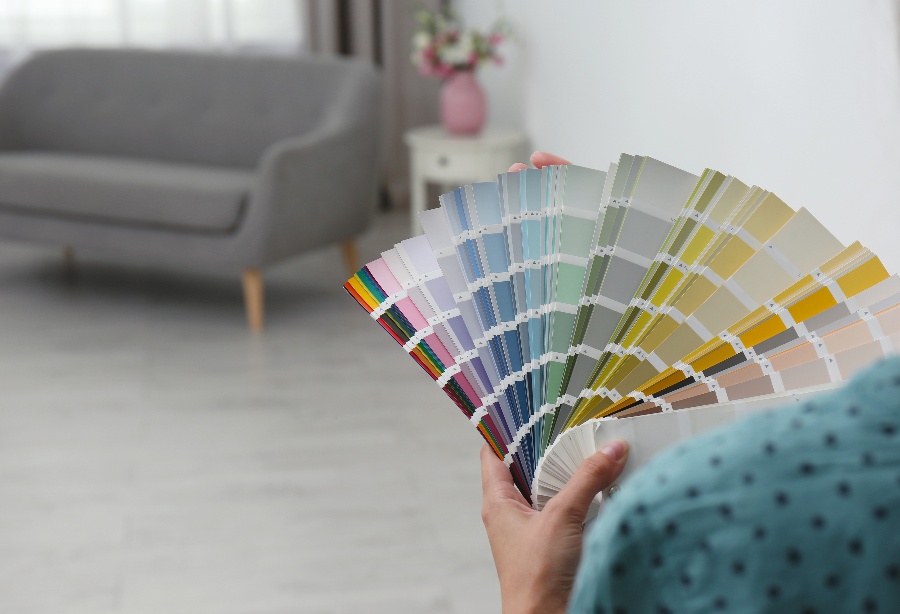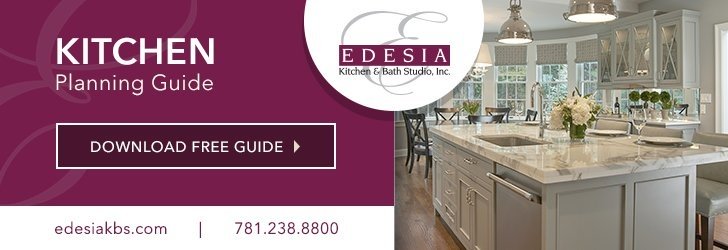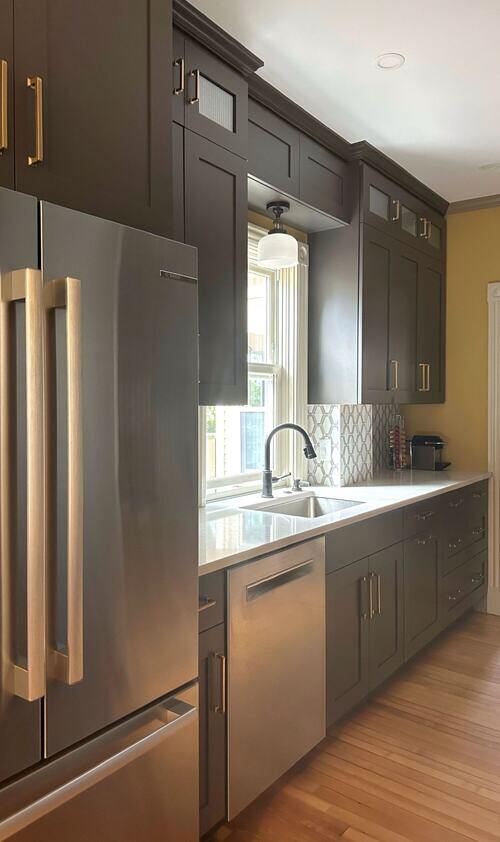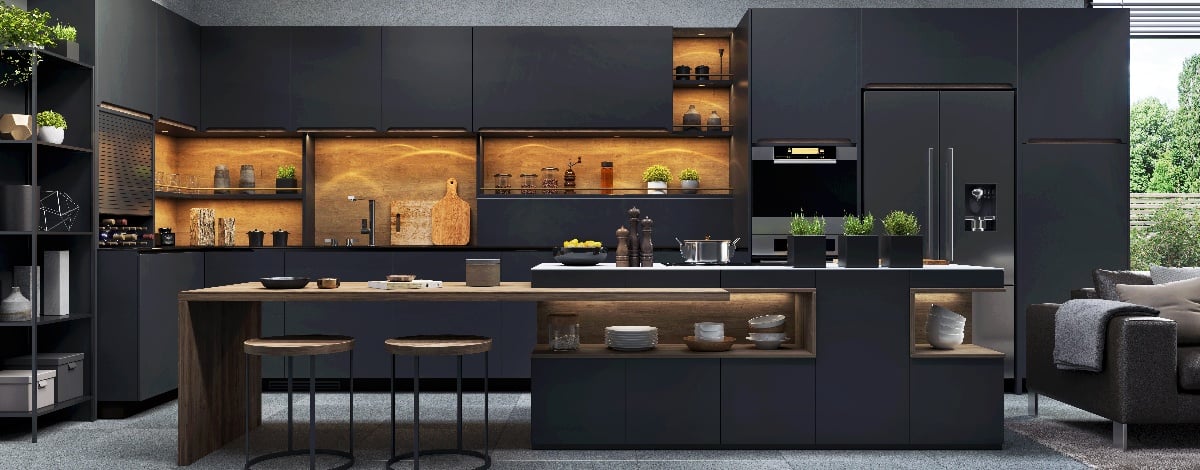Color theory helps designers select color hues that go well together and create a color scheme for your home that looks good.
Which color schemes you might pick are influenced by trends and cultures, but these colors can reflect your personality and also influence your mood at home.
Here's a look at the color wheel, the effects of color choices, and what works in kitchens and bathrooms.
The Color Wheel
Many of us are familiar with the color wheel. It shows the primary colors of red, yellow, and blue. Between them, it has the secondary colors of green, orange, and purple.
And, it also has the tertiary colors that are located in between the primary and secondary colors. These colors are yellow-orange, yellow-green, blue-green, blue-purple, red-purple, and red-orange.
Designers can select a color scheme for the entire house, so the colors flow from room to room in a balanced way.
According to The Delight of Design, there are several popular harmonies that can be used to create color schemes from the color wheel. Three of the most basic ones are:
- Analogous: several colors right next to each other on the color wheel
- Complementary: two colors directly opposite each other on the color wheel
- Triadic: three colors that form an equilateral triangle on the color wheel
It's great to use a dominant color in 60% of the space, a secondary color for 30% of the room, and an accent color for 10% of the space.
The colors can be selected with warm or cool hues in mind. Neutral colors also lean toward either warm or cool. The warm colors have more red undertones, while the cool colors have more blue undertones.
Characteristics and Feelings
The colors selected can help elicit a feeling or mood. Here are some associations with some colors, according to Home Advisor:
- "Red: ambitious, bold, powerful, passionate, active
- Orange: instinctive, optimistic, extroverted, charismatic
- Yellow: energetic, joyous, friendly, spontaneous, fun
- Green: growth, prosperous, hopeful, restorative, generous
- Blue: content, responsible, intelligent, authoritative, controlled
- Purple: creative, fanciful, distinguished, compassionate, devoted"
Making the hues darker or lighter also has an effect. Black can help evoke sentiments like "confident, elegant, mysterious, commanding, judicious."
White provides a different effect and is associated with concepts like "wise, pure, honest, innocent, influential."
Warm colors can help energize, while cool colors can help soothe. Don't forget to consider the lighting in the room, since that will affect how the colors look, according to Cosmopolitan.
Color Schemes in Kitchens and Bathrooms
When picking a color scheme for a kitchen or bathroom, it's useful to keep in mind that certain materials naturally have warm or cool undertones. Cool materials include titanium, stainless steel, and polished chrome.
Warm materials include brushed or polished nickel, French gold, unlacquered brass, brushed bronze, gold, copper, oil rubbed bronze, and rose gold. Woods and stones can also feel warm or cool as well.
White kitchen cabinets continue to be the most popular. Blue and gray are also becoming popular cabinet colors and can be used alone or only on lower cabinets. Natural woods are also making a comeback for cabinets as well.
Lots of colors are great in bathrooms, but small bathrooms may want to stick with neutrals and pale colors. Brightly colored tiles can be used in small accent spaces though. In larger bathrooms, don't be afraid to add bright or dark colors.
And, don't forget about fabrics in kitchens and bathrooms. The colors and patterns of towels, curtains, and shower curtains can provide a space for an additional accent color from the color scheme.
We'd be happy to talk about color schemes that would look good in your kitchen or bathroom. Contact us today with any questions!











